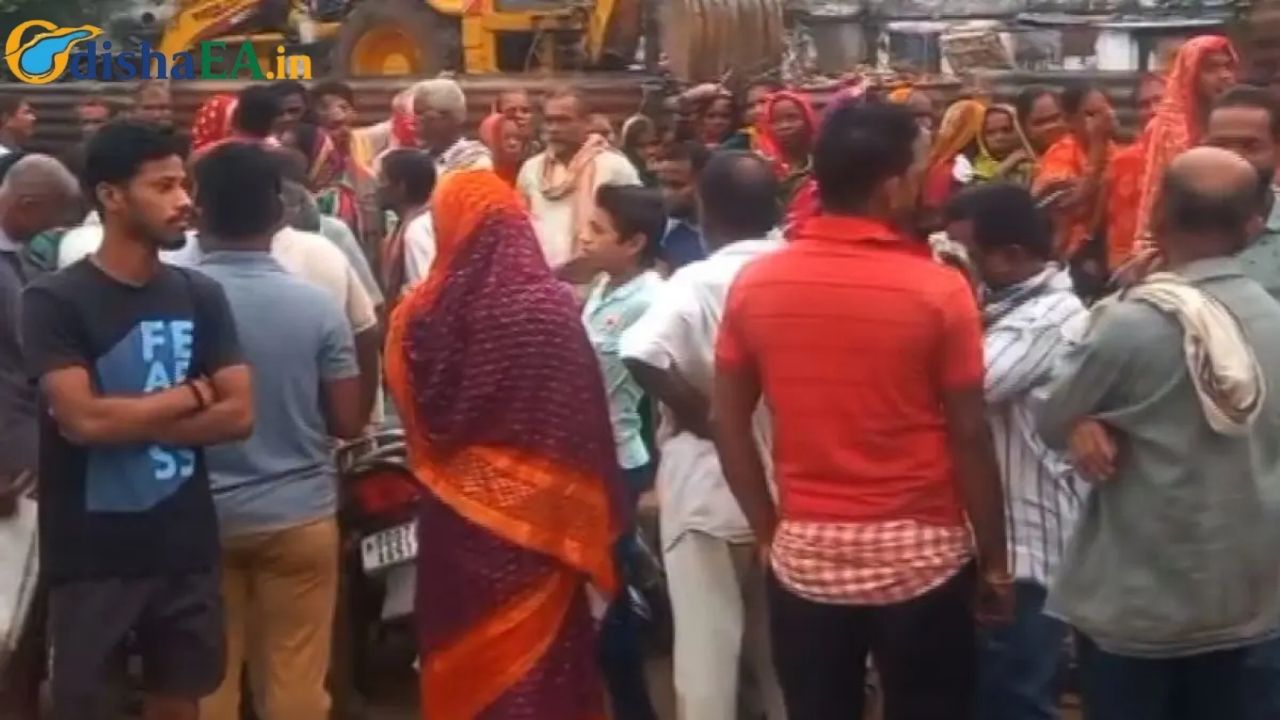In a groundbreaking operation, the Odisha Vigilance Department has uncovered massive corruption involving a forest official, revealing crores of rupees in cash, gold, and silver at his properties. The officer, Rama Chandra Nepak, a Deputy Ranger and In-Charge Ranger of the Jeypore Forest Range in Koraput district, had been living far beyond his means, despite his modest government salary of ₹69,680. This alarming discovery has shaken the state and serves as a wake-up call to corruption within India’s public service sector.

Vigilance Raids Reveal Crores in Cash, Gold, and Silver
| Key Data | Details |
|---|---|
| Officer Name | Rama Chandra Nepak |
| Position | Deputy Ranger and In-Charge Ranger, Jeypore Forest Range |
| Location of Discovery | Jeypore, Odisha |
| Assets Seized | ₹1.43 crore in cash, 1.5 kg of gold, 4.63 kg of silver, and real estate |
| Source of Salary | ₹69,680 per month |
| Date of Raid | July 2025 |
| Properties Linked to Officer | Multiple properties, including flats and land plots in Jeypore and Bhubaneswar |
| Documents Seized | Bank deposits exceeding ₹1.33 crore |
| Arrested | Yes, arrested after raids, expected to be presented before the Special Judge |
| Official Source |
The raid on Rama Chandra Nepak’s properties is a powerful reminder of the need for continued vigilance in public service. With vast amounts of cash, gold, and silver seized, and multiple properties exposed, this case serves as a wake-up call to the dangers of unchecked corruption in government. While the fight against corruption is ongoing, the Odisha Vigilance Department’s operation proves that even the most powerful individuals can be brought to justice.
For those working in public service, the message is clear: integrity is not just a moral choice—it is a professional duty. Citizens place their trust in government employees to serve with honor, and it’s up to every public servant to ensure that trust is never broken.
By keeping the language simple, clear, and structured, this article offers insights into a complex issue while remaining engaging for a broad audience. Vigilance raids like the one in Jeypore serve as critical reminders that corruption can be found at any level, but it can also be fought with diligence and transparency.
Context: Uncovering the Hidden Wealth
Rama Chandra Nepak’s modest monthly salary of ₹69,680 starkly contrasts with the vast fortune discovered during a series of raids by the Odisha Vigilance Department. His office and residential properties in Jeypore and Bhubaneswar were all part of a multi-location search, leading to the discovery of over ₹1.43 crore in cash, along with substantial amounts of gold and silver. This case has raised critical questions about transparency and accountability in government service.
Nepak’s sudden wealth appears to be the result of long-standing illegal activities, including bribery and corruption. Despite being a government employee with a salary much lower than what was discovered in his possession, he managed to amass a fortune that includes luxury real estate, precious metals, and secret compartments packed with cash. The investigation is not only about confiscating his assets but also about understanding how such large sums could accumulate over years of service.
The Vigilance Raid: What Was Found?
Let’s break it down with a little more detail on what the authorities uncovered during their raids:
1. Crores in Cash
A staggering ₹1.43 crore was found in cash, which was neatly hidden in secret compartments at Nepak’s flat in Jeypore Town. Authorities say that the money was tucked away in a concealed room, demonstrating just how much effort went into hiding the illegal wealth. With cash like that, you’d think Nepak was operating like a mafia boss, rather than a civil servant working with the forest department.
2. Gold and Silver
The treasure didn’t stop at cash. Authorities also seized a significant amount of gold and silver. This included 1.5 kg of gold, consisting of four gold biscuits and 16 gold coins, each weighing 10 grams. Along with the gold, they discovered 4.63 kg of silver, a hoard of precious metals that adds to the evidence of this officer’s illicit financial activities. These precious items are now part of the investigation to understand just how deep this corruption goes.
3. Real Estate and Property Holdings
The raids didn’t just reveal cash and gold; they also uncovered a real estate empire. Nepak owned a three-story building in Jeypore, along with three residential flats and two high-value land plots. These properties were clearly accumulated over the years, far exceeding what could be reasonably attributed to his government salary.
4. Bank and Insurance Deposits
Authorities also seized bank and insurance documents revealing deposits exceeding ₹1.33 crore. This further confirms that Nepak was involved in activities far beyond the scope of his official duties.
Breaking Down the Case: Understanding Corruption at Work
This case is not an isolated one. The unearthing of such significant wealth in the hands of a public official reveals a systemic issue in government departments that cannot be ignored. Here’s how this corruption likely played out:
- Bribery and Kickbacks: It’s highly likely that Nepak received bribes or kickbacks in exchange for favors such as awarding contracts or turning a blind eye to illegal activities in the forest. Forest officers often have significant influence over land use, timber trade, and environmental regulations. Corrupt officers can exploit these powers for personal gain.
- Secret Compartment: The hidden compartments found in Nepak’s flat suggest a high level of sophistication in hiding illicit wealth. This wasn’t just a case of poor decision-making but rather a deliberate and sustained effort to conceal corruption from authorities.
- Property Accumulation: Public servants with the power to control land and resources can often leverage their positions to acquire property at a fraction of its true value. Nepak’s property holdings are an example of how corrupt individuals can use insider knowledge to amass significant wealth, sometimes without drawing suspicion for years.
A Wake-Up Call for Public Service: The Role of Vigilance
The discovery of Nepak’s hidden wealth is a reminder of the importance of vigilance in all sectors of government. The Odisha Vigilance Department has made significant strides in fighting corruption, and the raid on Nepak’s properties is just one of many recent efforts to crack down on dishonest officials.
If you’re working in government or any public service, it’s vital to understand that corruption is not only illegal but also undermines the trust citizens place in public institutions. Corruption doesn’t just harm individuals; it erodes the very foundations of society. Transparency and accountability are essential for a well-functioning democracy.
Here’s a breakdown of how vigilance operations typically unfold:
Step 1: Intelligence Gathering
Vigilance agencies start by gathering intelligence on an officer’s behavior. This could involve monitoring unexplained wealth, unusual property acquisitions, or complaints from the public about unethical practices.
Step 2: Surveillance and Investigation
Once intelligence is gathered, investigations are conducted to confirm suspicions. This often includes surveillance, collecting documents, and conducting interviews with colleagues or people connected to the officer.
Step 3: Raids
If the investigation provides enough evidence, raids are carried out. These are typically well-coordinated operations involving multiple teams. The raids seek to uncover illegal wealth, seize assets, and gather more evidence for further legal action.
Step 4: Legal Proceedings
After the raids, the officer is arrested and produced before a Special Judge. The legal process follows, which could involve charges, trials, and potential jail time if convicted.
Odisha Vigilance Raids Deputy Ranger, Seizes Rs 1.4 Crore, Gold Biscuits, and Coins
Odisha DFO Under Scrutiny After Rs 50 Lakh Deposits Detected in Accounts
Odisha Holds 44 Bengali Migrant Workers as Citizenship Verification Process Continues
FAQs
1. What was found during the raids?
The raids uncovered ₹1.43 crore in cash, 1.5 kg of gold, 4.63 kg of silver, multiple properties, and documents revealing over ₹1.33 crore in bank deposits.
2. How did Nepak accumulate such wealth?
Nepak’s wealth accumulation likely stemmed from bribery, kickbacks, and exploitation of his position in the forest department, where he had control over land use and timber trade.
3. Why is this case important?
This case highlights the systemic corruption within the public service and the need for greater transparency and accountability in government roles.
4. What is the role of vigilance departments?
Vigilance departments monitor, investigate, and take action against corrupt public officials, ensuring that government institutions function transparently and ethically.
5. What happens next in the case?
After the raids, Nepak was arrested and is expected to face legal proceedings before a Special Judge. Further investigations are ongoing to uncover the full extent of his corruption.





